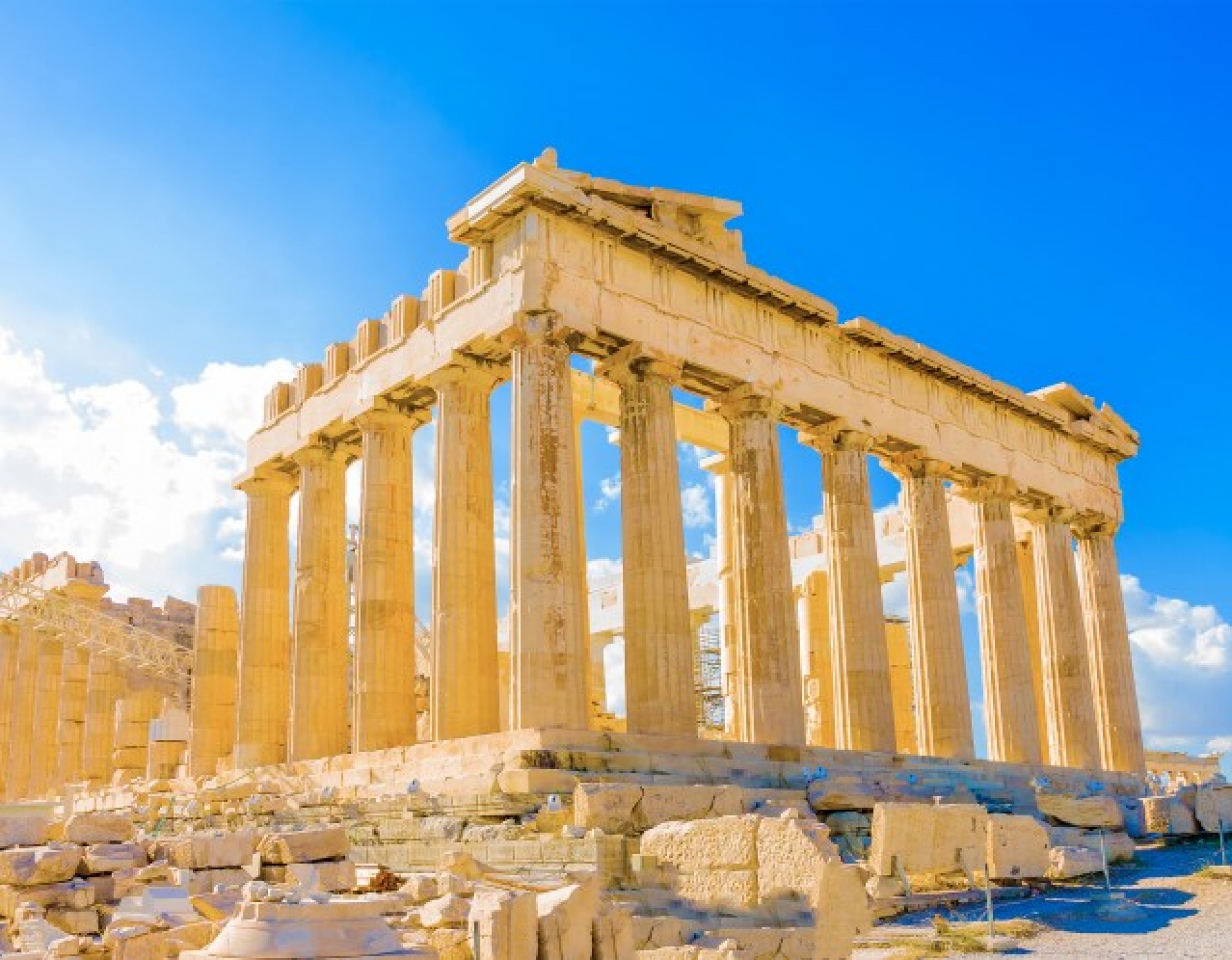The Parthenon lies at the top of the rock of the Acropolis and is the most famous temple worldwide. Its construction begun in 448 BC and the Parthenon we have today was inaugurated in 438 BC. Since goddess Athena was the patron of the city of Athens, the temple was dedicated to her. Inside the Parthenon there was once a statue of the goddess, made of gold and ivory.
The completion of the Parthenon was a collaboration between the architects Iktinos and Kallikratis, as well as the famous sculptor Phidias, who was responsible for both the sculptural decorations and the famous statue of Athena that is unfortunately lost today.
The temple of Parthenon is a unique architectural achievement that leaves every visitor speechless. The impressive and majestic view of the temple is achieved by using a series of mathematical ratios. Their application in the construction of the Parthenon, along with a series of special features (such as the slight inclination of the columns towards the interior of the temple) have created an aesthetically perfect result.
The temple is of Doric order and is one of the few ancient temples that were entirely made of marble. Actually, it worth noting that the famous Pentelic marble was used for its construction. The temple's metopes (fronts), the pediments and the frieze running around the Parthenon, are decorated with impressive embossed depictions. The sculptures have subjects taken from both Greek mythology (Titanomachia, Birth of Athena from the head of Zeus) and real life (Panathenaia), which are carved with an unparalleled technique that gave the Parthenon an unrivaled beauty.
In order to protect the Parthenon from the ravages of time and environment, many of its parts are gradually being replaced with replicas. The original parts of the Parthenon can still be admired in the modern New Acropolis Museum.
The Parthenon retained its original form until 5the century AD, when it was converted into a church, while in the Ottoman period it became a mosque. In 1687 when the Henets sieged the Acropolis, the Parthenon was hit by a shell that caused a great part of it to collapse. However, it seems that the monument was destined to suffer even more. Lord Elgin's looting caused new damage to the temple, striping it out of several sculptures that are now (together with one Caryatid) in the British Museum. The first attempts to restore the Parthenon begun around 1,900, while the maintenance and protection of this unique to humanity monument, continues unabated to this day.



